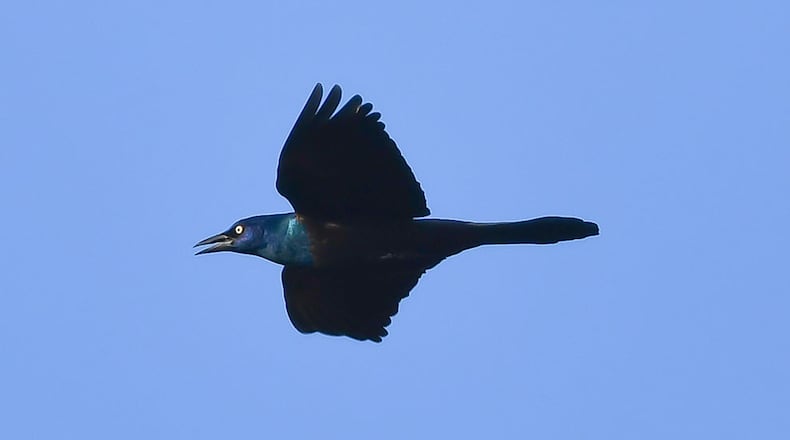“I’ve buried around nine or 10 grackles (and only grackles) over the last two to three weeks,” he said. “A few I’ve actually witnessed fall to the ground and start twisting and turning like they had vertigo or something.”
Credit: Ohio Department of Natural Resources (Cus
Credit: Ohio Department of Natural Resources (Cus
Straka was not alone, as NextDoor has been abuzz with residents of other communities experiencing the same thing.
The Glen Helen Raptor Center in Yellow Springs also has taken note of the problem, Executive Director Nick Boutis said.
“We’ve been tracking information from the U.S. Geological Service and the Department of Natural Resources Division of Wildlife,” he said. “And the Division of Wildlife has been regularly communicating with (wildlife) rehabbers in Ohio. We’ve been advised that they are thinking that it’s most likely a contagion, bacteria or a virus that’s impacting birds. But they’re still not sure.”
The Ohio Division of Wildlife couldn’t be reached for comment.
Alexis Faust, executive director of the Aullwood Audubon Society, said the organization hasn’t been able to confirm the source of the problem either, but has another possible theory.
“There is a feeling in the community that what’s been happening is in the areas where there’s a lot of cicadas, some people are spraying them with insecticide because they don’t like them,” she said. “And the birds are eating them and getting sick.”
Credit: Ohio Department of Natural Resources (Custom Credit
Credit: Ohio Department of Natural Resources (Custom Credit
Faust also warned that the effects of pesticide usage can extend beyond birds and cicadas.
“What we’re telling people is, ‘Please, please don’t spray the cicadas,’” she stated. “Not only because of the birds, but because pets are eating them. And the pets can become very sick or die from eating insecticides.”
Cicadas are often a misunderstood species, Faust said, and there’s no reason to spray pesticides on them.
“They really don’t fight, they don’t even have mouthparts,” she said. “They’re really a wonder of nature, if you think about it. So let’s try to look at them with respect, rather than trying to get rid of them with spray.”
Boutis also discouraged using pesticides on cicadas, but he doesn’t believe the chemicals are to blame for the bird deaths.
“We certainly think that spraying cicadas is going to introduce toxins into the environment without benefiting anyone, and (we) definitely encourage people not to do that,” he said. “But the information that we’ve gotten from the division of wildlife indicates that that’s an unlikely culprit.”
The bird mortality problem is not isolated to just Ohio. Wildlife managers in Washington D.C., Virginia, Maryland and West Virginia began reporting in late May on sick and dying birds with eye swelling and crusty discharge, as well as neurological signs, according to the U.S. Geological Survey.
“No definitive cause of death is identified at this time,” the federal agency said in a news release.
The USGS recommended that people in those areas take steps to stop the spread of a possible disease, including stop feeding birds, clean feeders and bird baths with a 10% bleach solution, avoid handling birds and keep pets away from sick or dead birds.
About the Author


